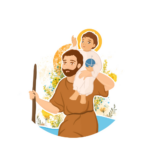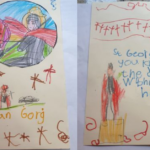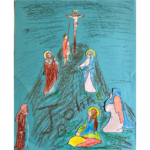
Saint John the Evangelist describes the scene of the Crucifixion of Jesus in his Gospel. He writes:
Near the cross of Jesus stood his mother, […]. When Jesus saw his mother there, and the disciple whom he loved standing nearby, he said to her, “Woman, here is your son,” and to the disciple, “Here is your mother.” From that time on, this disciple took her into his home.
During Jesus’ great agony on the cross, his mother was present.
Mary was present in Jesus’ life from it’s very beginning to its very end. Mary had accepted Angel’s invitation to be the Mother of Jesus. She carried Jesus for nine whole months as a baby in her womb and gave him birth in Bethlehem. She cared for Jesus as a young boy and took care of him as a teenager.

Mary was also present in Jesus’ public life when he visited different towns and villages proclaiming the Good news, healing people and calling them for conversion. Imagine, how many people would have asked Mary to speak to Jesus on their behalf, as she did at the Wedding of Cana. Mary stayed with Jesus even during his Passion, crucifixion and death on the Cross. Mary is always present in the life of Jesus. As we read in the Gospel, Jesus gave us Mary as our Mother when he said to the beloved disciple: “Here is your mother.” The disciple whom Jesus loved, represents all humanity and all the Church. He represents me and you, under the cross.
Mary is your mother, she loves you and she is always at your side. She is present in your joys and sorrows. Today, speak to her in the depth of your heart and ask her to stay always by your side as she stayed beside Jesus, under the cross, and don’t forget to turn to her when in need!
For more videos about the Lenten season, please click here.


















